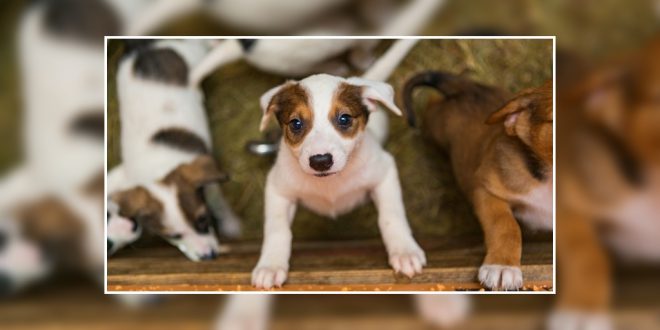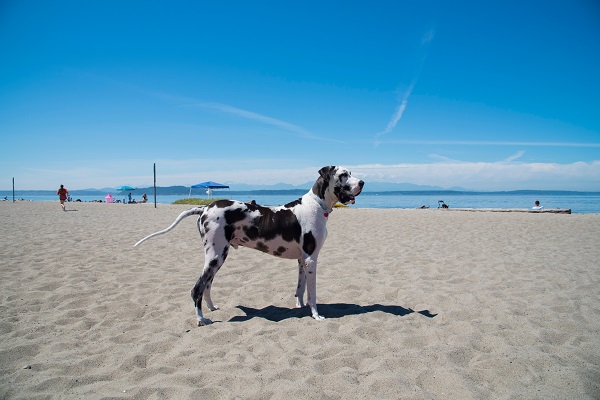Guest post!
Adopting a dog is both an exciting and frightening experience, but it doesn’t really need to be all that scary. If you follow this helpful checklist, you’ll be prepared and confident when facing all parts of the adoption process. So let’s get straight down to business and find you your new cute, adorable, and furry best friend.
Are You Ready for a Dog?
The first question you need to ask yourself is – are you ready for a dog? There are several things you’ll need to consider:
-
- Talking to your family – This goes without saying, but you’ll want to make sure everyone is on board. It’s OK if some are more uneasy about it than others, but if you have those against it then perhaps it’s best to wait.
- Check with your Landlord – You’ll most likely have to pay a separate fee if you choose to bring a dog into your apartment. Also, some places will have weight limits, which may be quite small, and breed restrictions as well.
- Do you have the time? – Regardless of whether you get an older house-trained dog or an untrained puppy, expect to spend more time with them in the beginning. Even after they have been trained/are accommodated you will still need to make time for the following:
- Feeding two to three times a day with fresh water is always available.
- Potty breaks. You should never expect an adult dog to hold it longer than 8 hours and puppies even less.
- Playtime/exercise. Some dogs have higher energy requirements than others, but most will need at least 30-60 minutes of playtime.
- Bonding time; separate from play/exercise time. Many dogs need lap/cuddle time.
- You’ll need to consider medical conditions and the extra time that it may require.
- Dogs with bigger coats will require more grooming time.
- Do you have space? – This will depend on living space, both inside and outside, as well as if you have other pets.
- Can you afford it? – Make a list of all expenses like food, vet fees, adoption fee, leash, collar, toys, dog licenses, dog’s cannabidiol oil medicine, shampoo, eye & ear care items, blind dog items, paw wax, feeding syringe, poop bags, insects biopel, etc.
Finding a Shelter
- A simple Google search will often pull up great results, but make sure to check out ASPCA’s national database if you need help.
- Also, make sure you know the difference between shelters and rescues. Rescues may include foster homes and you’ll have to make an appointment to see the dog.
Adoption Requirements
- Adoption fees – Most shelters and rescues have a small adoption fee to cover food, housing, vaccinations, etc they spent on the dog. These fees are almost always way cheaper than buying a dog.
- House inspection – Sometimes a house inspection will be required to make sure the house is ready for the pup. Other times they will have you fill out basic information on the application like whether you have a fenced-in backyard, whether you have children, etc.
- Spay and neutering – Most likely the rescue pup will already be fixed by the shelter/rescue, but if they are too young then you may be required to.
- Vet reference – you may be asked whether you’ve already talked to a vet, or you’ll have to get a vet “sign off” on the adoption.
- Age requirement – You will probably have to be 18 or 21 years and older.
Questions to Ask Yourself and The Shelter
- Do you have a veterinarian? – If not the shelter/rescue can point you in the right direction.
- History of adopted dog? – It’s always a good idea to ask before adopting if the dog has any medical or behavioral problems.
- Paperwork? – Most likely shelter/rescue will give you all the paperwork you need, but make sure to ask if they don’t as your vet may want to see it.
- Should I purchase pet insurance? – It’s more and more common for owners to purchase separate insurance for their pet. If you decide against it, then I recommend saving away a certain amount each month in case of an emergency.
- Are your other pets ready? – This is important, especially if you have had pets that been alone for years. Whether it’s the newly adopted dog or your pets already living at home, make sure you slowly introduce them if either has never been around another animal before.
- Do you or your family members have allergies? – Just because you have allergies doesn’t mean you can’t get a dog, you’ll just want to adopt one that is hypoallergenic.
- Do you or any family members have health issues? – If you are older or have restricted mobility than perhaps an older dog will be better suited than a rambunctious puppy.
- Is this breed the right fit? – If you’re looking at a purebred, make sure you know their breed-specific requirements and characteristics. For mixed breeds ask the shelter/rescue.
Bringing Home Your Pup: Dog Proofing Your House
- Try to see your home from a dog’s eye – Yes, this means getting down to their height level and looking for trouble items.
- Barring off areas – Fences/gates are really helpful for stopping a dog from entering an area they shouldn’t.
- Toxic plants – Check out this link for information on known dangerous plants.
- Electrical cords – Some puppies will try to chew on cords they find hanging around.
- Trash – Make sure you have all trash cans out of reach.
- Medication – You don’t want any pills, containers, vitamins, etc. within reach.
- Clothing and shoes – Puppies love these items because they smell like you.
- Cleaning supplies – It’s probably best to avoid the bathroom altogether.
Your Handy Shopping Checklist
- Food
- Food and water bowls
- Crate
- Dog bed
- Collar, leash, harness, etc
- Dog ID/license/microchip
- Treats and chews
- Toys
- Cleaning supplies (odor-neutralizing carpet sprays, puppy pads, waist bag, etc.)
- Grooming supplies: brushes, shampoo, nail clippers, etc.
- Medication (heartworm, and flea and tick prevention)
This article is submitted by Brianna Hill. She owns a variety of dog breeds like Labrador Retriever, Chihuahua, and an Australian Shepherd. She has been raw feeding them since the early 2000s. She is an advocate for natural health care for dogs and works tirelessly to educate pet owners on the benefits of the same.
DISCLAIMER: DogExpress does not endorse or take responsibility for the content in the guest post.
Want to read more articles like these? Subscribe to our newsletter today!
 DogExpress
DogExpress

















 in Chandigarh, India.
in Chandigarh, India. 

